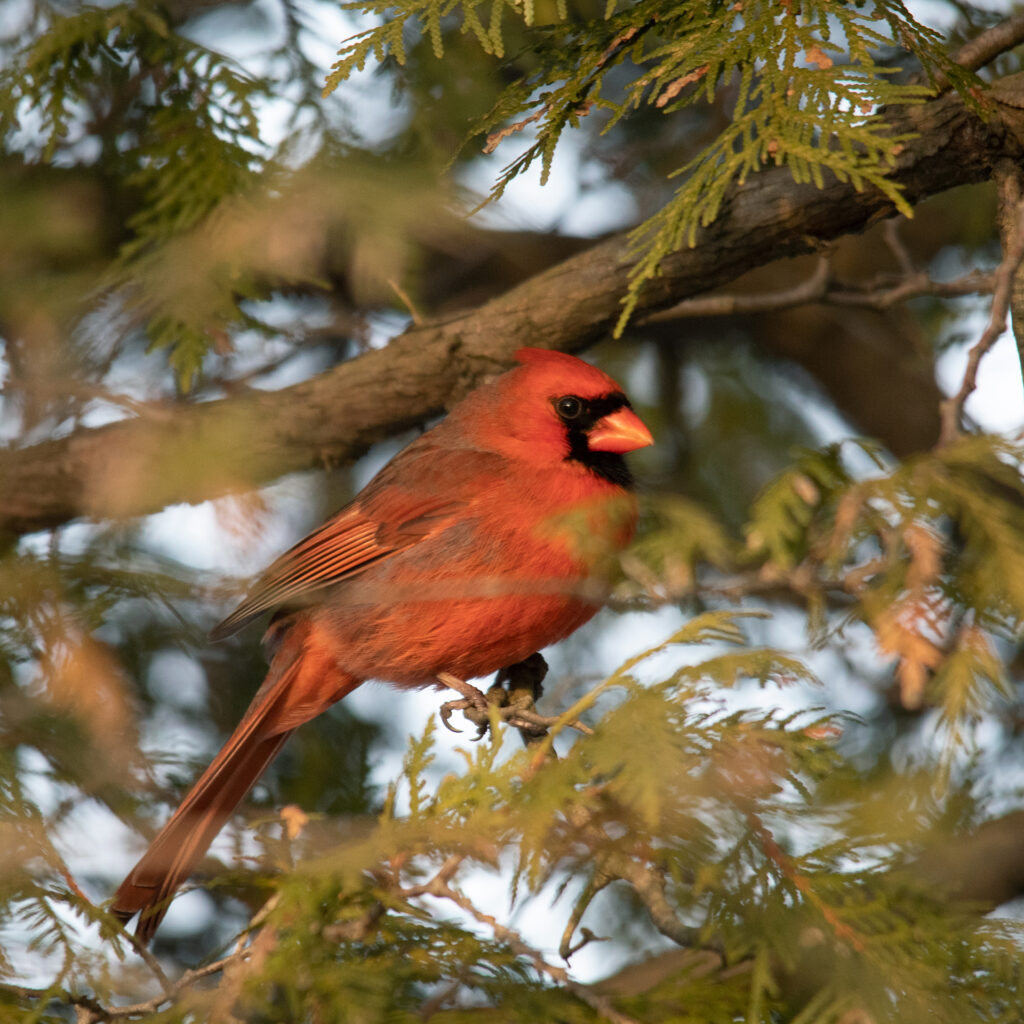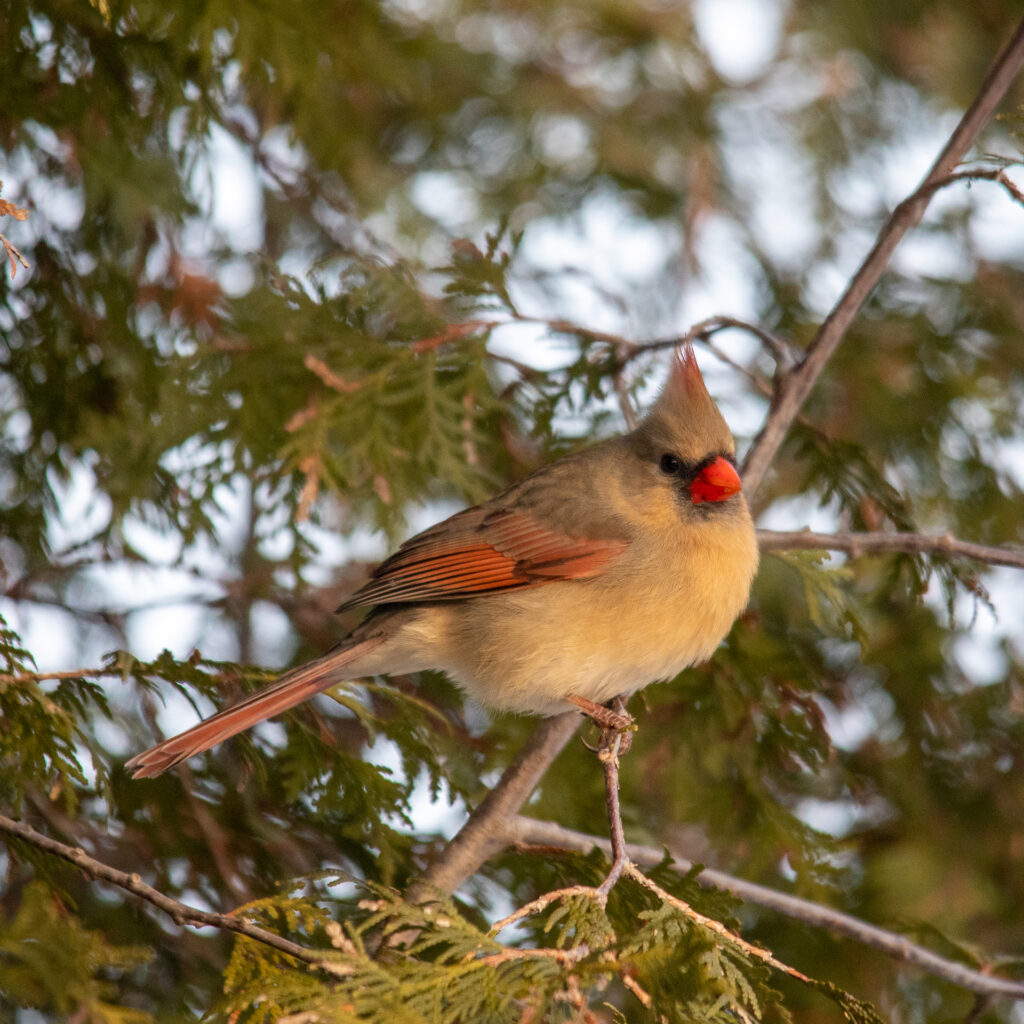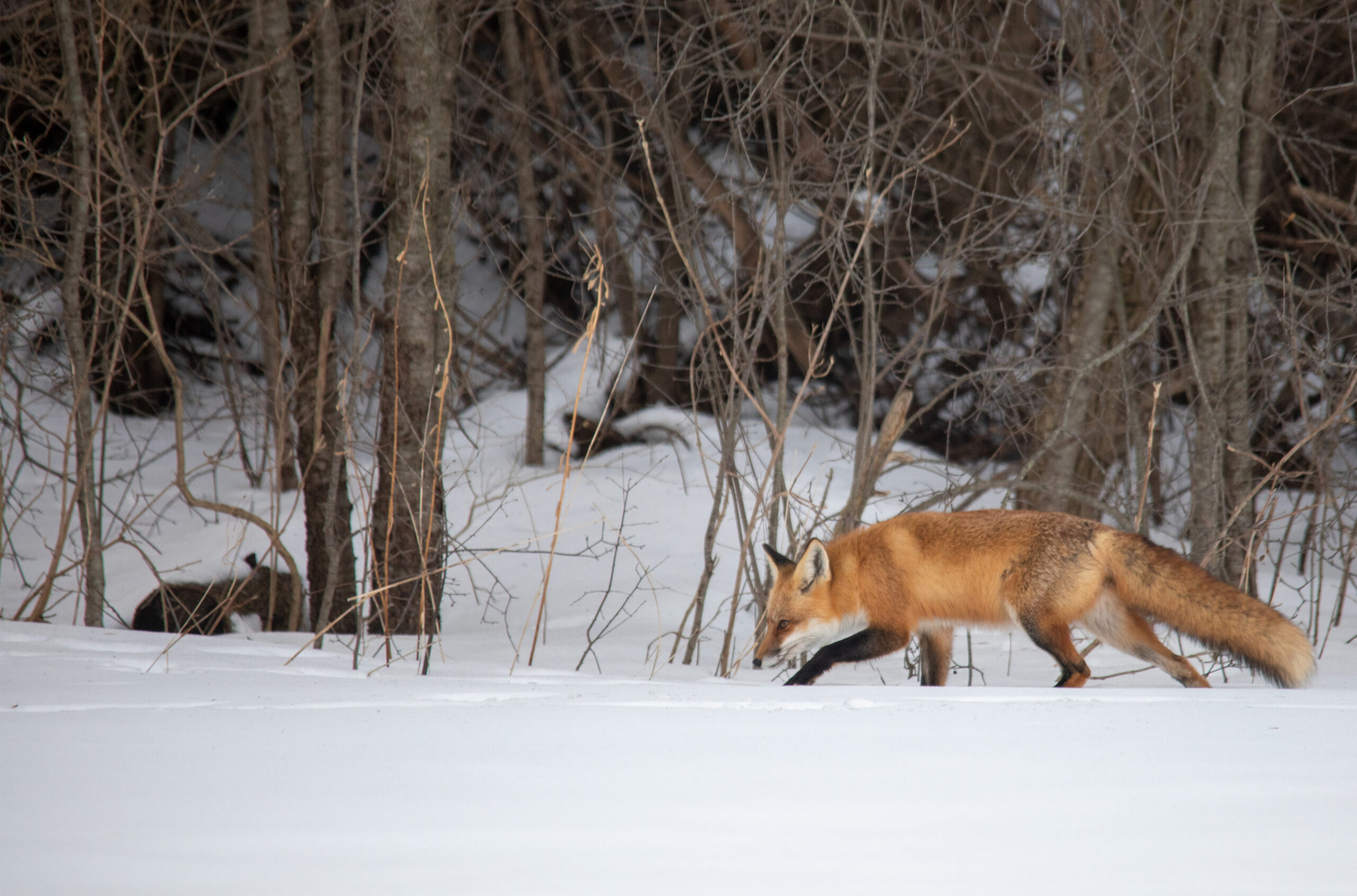Late February often offers a reprieve from overcast winter days, with bright blue skies above sparkling white snow. Splashes of colour abound, with green snowdrops pushing through the snow and orange-breasted robins, yellow-streaked goldfinches and white-throated sparrows in the trees. Against the greens, blues and whites of winter, red stands out the most, and on Family Day, red was on full display in Welland.
COVER PHOTO: The red fox has the greatest distribution of any carnivore and can be found everywhere in Canada except the islands of the arctic. In Niagara, they can be found in fields, woodlands, and even the suburbs.
The red fox (Vulpes vulpes) is usually well-camouflaged, with reddish-orange fur that blends in with shadows and leaves. However, when snow blankets Niagara, red foxes are easier to spot, and I was lucky to watch one hunt in the early morning along the icy banks of the Welland Canal.
Red foxes primarily hunt rodents and other small animals, and they can be found in light woodlands and fields where prey is abundant. According to the online citizen science platform iNaturalist, most observations in Niagara have been near bodies of water, such as the canal or the shores of Lake Ontario or Lake Erie. Highly adaptable to their environment, red foxes can even be found in our suburbs, particularly in Niagara-on-the-Lake.
Historically, red foxes were one of the major vectors of rabies in Ontario. However, hikers should be comfortable around foxes as baits containing an oral vaccine have proven effective in reducing the incidence of rabies in foxes. In 2020, the Ministry of Northern Development, Mines, Natural Resources and Forestry reported no incidences of foxes with rabies.

Another splash of red in February is the northern cardinal (Cardinalis cardinalis). Males are unmistakable with their red plumage, crest, and black mask and beard; female have a lighter grey body with red-accented wings, crest and tail. Both sexes have a bright orange beak.
While cardinals are year-round residents in Niagara, the pugnacious behaviour of males at the start of the breeding season makes them more noticeable. In late winter, the males start singing to defend their territory, and their clear song can be heard from treetops anywhere males find suitable breeding grounds. When alarmed, the rapid, sharp chipping calls are also a clue to hikers that cardinals are nearby.
An interesting bit of linguistic trivia the red fox and northern cardinal share is that their scientific names are tautonyms – that is, the genus and species names are the same (Vulpes vulpes and Cardinalis cardinalis, respectively, for the red fox and northern cardinal). Tautonyms are common in scientific names for animals but are not permitted in botany.

Backyard bird watchers can also find red on the male downy woodpecker (Dryobates pubescens) and hairy woodpecker (Leuconotopicus villosus) as well as both sexes of the red-bellied woodpecker (Melanerpes carolinus). All three woodpecker species are frequently drawn to suet feeders and are common throughout Niagara.
No mention of red animals would be complete without the American red squirrel (Tamiasciurus hudsonicus). A smaller cousin of the familiar Eastern Gray Squirrel, the red squirrel’s chattering, scolding call is a familiar sound throughout the year. The red squirrel is commonly seen near black walnuts and fruit-bearing trees and is less likely to raid bird feeders than their gray cousins.
The fox, cardinals, woodpeckers and squirrels had me peacefully seeing red all day long on February 21, and I hope many readers were able to enjoy all the beautiful colours of nature that day as well.
Family Day also marked the conclusion of the 25th annual Great Backyard Bird Count. First held in 1998, this four-day event encourages novice and expert birders to record their observations anywhere, from backyards to provincial parks. It is a joint program of the Cornell Lab of Ornithology and the National Audubon Society, with Canadian partner Birds Canada.
As of Monday evening, about 250 species and 25,000 birds had been observed across Canada during the four-day run of the Great Backyard Bird Count. In Niagara, 92 species were observed, with the European starling and long-tailed duck earning the most observations. Visit https://ebird.org/gbbc/region/CA-ON-NG for updated records, Niagara participants, and more information.
While red foxes and northern cardinals have features that make them easy to identify, other animals — such as the previously mentioned downy and hairy woodpeckers — may pose a challenge for even experienced nature enthusiasts. Programs such as the Great Backyard Bird Count and Audubon’s Christmas Bird Count are improved when species identification is as accurate as possible. I highly recommend the iNaturalist platform to help with identifying and increasing knowledge. It is available on both desktop and mobile devices and can aid in identifying plants, animals, and even fungi. It is free to use, and it is wonderful for hobbyists and beginners alike. For more information, visit inaturalist.ca
Share your iNaturalist profile or your stories of participating in the Great Backyard Bird Count — email [email protected] and you might be featured in an upcoming edition of Niagara Nature.
